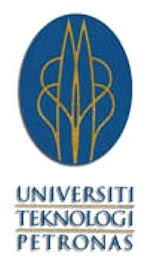Radio frequency identification (RFID) is a data collection technology that uses electronic tags to store identification data and a wireless transmitter or reader to capture it. Radio frequency technology is not new; what is new are the widely adopted data standards like the electronic product code (EPC) and the new required hardware and software. Many companies are or soon will be investigating this new hardware and software. Several retailers and organizations are mandating that companies use RFID to track assets. To comply with these mandates and keep up with competitors, most firms should be preparing to implement RFID. To prepare for RFID, companies will need to make many people, process, and technology decisions and changes.
According to Sweeney (2005), RFID technology have already been used for inventory monitoring by big companies such as Wal-Mart, the US Department of Defense, Target, Albertsons, Best Buy, Tesco, Metro, the FDA and many more. It is used to track company inventory in the supply chain more efficiently by tracking individual items with serialized data, reducing human intervention and providing the opportunity to track more item simultaneously. RFID also provide real-time in-transit visibility (ITV) and increase the security compared to the previous technology, bar code. (3)
The component of RFID device consist of three main things, the RFID tags, which is used as the identification card or chip that are placed on books that need to be tracked, the reader, which send and read data from the tag, and the antenna, which deliver the signal
RFID: The Basics
Radio frequency identification (RFID) is a data collection technology that uses electronic tags to store identification data and a wireless transmitter or reader to capture it. It is one of many technologies that will extend the Internet to the physical world and help companies vastly improve the way they manage their physical assets — a trend Forrester calls the extended Internet (X Internet)
RFID in Library
Libraries are a fast growing application of RFID; the technology promises to relieve repetitive strain injury, speed patron self-checkout, and make possible comprehensive inventory. Unlike supply-chain RFID, library RFID requires item-level tagging.
Many libraries are starting to tag every item in their collections with radio frequency identification (RFID) tags. As RFID tag is a small, low-cost device that can hold a limited amount of data and report that data when queried over radio by a reader. Several libraries, such as the Santa Clara City Library in
According to Fatima Mussa (2009), many big libraries already have their own computerized catalogues available on computer terminals throughout the building, while some still using an old card catalogue on index cards in drawers. Alternatively, asking the librarian on what service that is available and how to use them, and it can tell roughly in which area the book may be placed. The exact location of the book is up to the user to find it themselves.
Even with the current cataloguing, indexing and even with the help of librarian, finding a desired book in library still a time consuming task. And on top of that, even with all help that can be found, there’s no guarantee that the book will be found where it is suppose to be. This is due to the exact whereabouts of those books are not really being monitored by any other mean.
While librarian has taken effort to make books at library can be search easily, there is still some case of common user who doesn’t put book that had been used back to the actual place. This situation happens a lot in big libraries with a mass number of books, thus finding the exact location of books by a reader more difficult and uncertain.
There’s also cases of books that has just been returned but haven’t really being distributed to its original location yet, books been hide by user at some places so that they are the only one who can gain access to the book, damaged book that can’t be recognized anymore but still marked as available by library archive and other uncommon cases that resulting a loss of time and effort in finding back the book.
As a solution a smart book finder that uses Radio Frequency Identification (RFID) technology can be implemented to help library user finding books in a more efficient ways. RFID have the ability to be detected within a certain amount of area depending on type of RFID devices that are used thus making searching book more ease and effective.
The component of RFID device consist of three main things, the RFID tags, which is used as the identification card or chip that are placed on books that need to be tracked, the reader, which send and read data from the tag, and the antenna, which deliver the signal



No comments:
Post a Comment